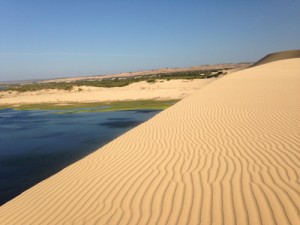Mekong floating markets, fruit orchards and wildlife
>> Others topics: Ho chi minh mausoleum hours
The Mekong River travels over 3,000 miles on its way to the sea, where its journey terminates at Cuu Long, the famous Mekong Delta. The name means ‘nine dragons’ – the nine mouths that wend their way across the 62,160km of canals, channels, silt islets and mangrove swamps that comprise the delta. Believed to have formed over 6,000 years ago, it is one of the most productive rice-growing regions in the world.
The entire culture of the delta’s inhabitants revolves around the behaviour of the river. The myriad drainage channels wend their way around a vast patchwork of tiny islands, and dominate transport throughout the region: boats and barges crisscross the river in every direction. The annual floods inundate the delta with up to three metres of water for several months. Floating markets, colourful and vibrant, sustain the many riverside hamlets. Everything is connected to the mighty Mekong, Vietnam.
The Mekong Delta buzzes with life, both human and natural: only in the remotest densely-packed mangrove areas are the narrow tributaries eerily quiet.
The main routes to the Mekong are by road or water. Fast boats travel between Ho Chi Minh City and the towns of Vinh Long, My Tho, and Can Tho: one of the hotels in Can Tho has a private service for its clients.
Most visitors travel by road. The first part of the journey is a long and tedious escape from the sprawling suburbs of Viet Nam’s largest city, but becomes more interesting as the road passes My Tho and begins to cross the delta.
My Tho is the destination of many of the Mekong tours from Ho Chi Minh City. It is very ‘touristy’, so we by-pass it to head for lesser-known, out-of-the-way places that lack the relative sophistication of the tourist areas, but make up for it by
>> Others topics: Hanoi attractions

